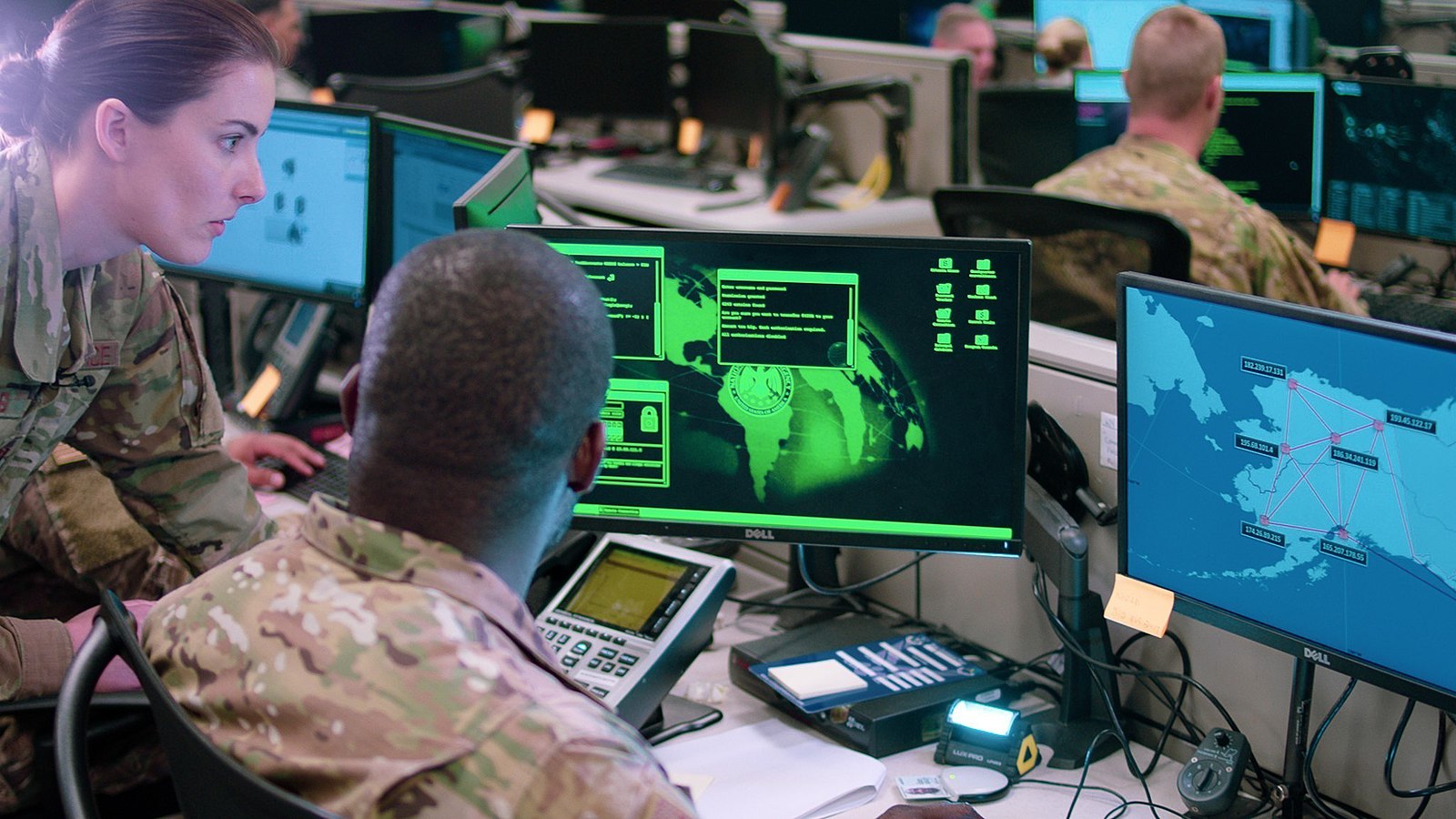How Acquisition Reform Could Make Military AI More Expensive and Less Safe

Published by The Lawfare Institute
in Cooperation With

Artificial intelligence (AI) contracting makes up a sliver of military spending, but it is growing quickly. Last month, the Pentagon awarded contracts totaling up to $800 million for four tech companies to develop military applications of their general purpose AI models. The news comes on the heels of the Army’s announcement that it plans to buy up to $10 billion in software capabilities from the data analytics giant Palantir. Secretary of Defense Pete Hegseth has directed the military to fast-track its acquisition of AI and related software to “maximize lethality” while setting ambitious targets for the Army to overhaul its weapons systems and battlefield decision-making with the technology.
As the military speeds up AI integration, lawmakers are whittling down the tools available to the Department of Defense to negotiate fair and reasonable prices and scrutinize contractors’ claims about their products and services. This year’s defense policy bill—the National Defense Authorization Act (NDAA)—would roll back data disclosures that help the department understand the real costs of what they are buying, and testing requirements that establish whether what contractors promise is technically feasible or even suited to its needs.
Some lawmakers have framed these changes as an effort to “improve efficiency” and “unleash innovation.” They have broad support from the defense industry, which has long criticized the acquisition process as excessively bureaucratic. Tech companies are also calling for changes to the process they say will help the military field innovative capabilities faster.
Efficiency and innovation are important objectives that should guide Congress as it examines how to tailor the acquisition process to the particularities of software development. But there is little evidence that cost and pricing data or testing requirements are to blame for lengthy schedule delays and anemic competition. In fact, former acquisition leaders have reported the opposite, tracing many of these problems to the lack of price controls and testing throughout the acquisition life cycle.
This year’s NDAA risks repeating past mistakes with a new generation of military contracts. The Department of Defense inspector general has issued more than 20 reports since 1998 documenting contractors overcharging the Pentagon. Weakening acquisition safeguards will not only pave the way for more waste; it also undermines the Pentagon’s ability to discern the proper role of AI and other emerging technologies in filling critical capability gaps, particularly at a time when claims about what these technologies can accomplish do not always stand up to scrutiny.
Restricting Meaningful Cost and Pricing Disclosure
The Department of Defense largely relies on contractors to provide the data it needs to determine whether they are charging fair and reasonable prices on military contracts. The most useful data is certified cost and pricing information, because certified information is data that contractors have verified is “accurate, complete, and current.” Congress established certified cost and pricing requirements as part of a 1962 law known as the Truth in Negotiations Act (TINA), which it passed after a series of revelations that federal contractors, mostly from the defense industry, were overcharging the government.
Certified cost and pricing data ranges from a detailed breakdown of labor costs, to invoices of recent and comparable sales, to published catalog prices. This information is a commonsense way to verify prices, particularly in situations where there is little to no competition for a contract. The Pentagon has few tools to assess price reasonableness when it deals with sole-source contractors—companies it relies on exclusively for certain military services and products. Certification requirements equip it with the information it needs to prevent overcharging. These requirements also come with remedies for defective pricing—namely, a price adjustment if the Pentagon discovers that a contractor legally mandated to certify its data knowingly submitted inaccurate, incomplete, or old cost and pricing information.
Since the 1990s, Congress has rolled back the requirements established through TINA, making certified cost and pricing disclosures the exception rather than the rule. It has progressively raised the mandatory disclosure threshold for certified cost and pricing data—which was $100,000 per contract under TINA—to $2 million as of writing. The House and Senate NDAA bills for fiscal year 2026 would further chip away at TINA, raising the threshold to $10 million.
Supporters of this increase argue that certified data requirements are well intentioned but unrealistic, since they require contractors to quantify the costs of intangible investments such as training and software development. But these are costs that contractors track and estimate during the ordinary course of business—the government is simply asking them to validate this information. Moreover, contractors can claim reimbursement from the government for personnel and other costs incurred to comply with TINA.
Another common complaint is that data disclosure requirements are slowing down the acquisition process. The reality is that some contractors are holding it up by delaying or denying the Pentagon cost and pricing data. A 2022 study by the Government Accountability Office also found that the vast majority of Pentagon contracts do not require such data. One reason for this is that many of these contracts are small-quantity, lower-dollar-value purchases. Between January 2017 and June 2019, the spare parts supplier TransDigm, Inc., arranged for 95 percent of its contracts with the military to fall below the disclosure threshold. Boeing also disclosed that 93 percent of military contracts awarded to the company in 2022 and through May 2023 were below the threshold.
Government watchdogs warn that the high disclosure threshold has made the Pentagon prone to unfair pricing. The Department of Defense inspector general’s review of TransDigm contracts between 2017 and 2019 found that the high threshold and other loopholes in TINA enabled the company to generate $20.8 million in excess profits. Just last year, the inspector general found that Boeing overcharged the Air Force by nearly a million dollars for spare parts, charging $4,000 for a soap dispenser—more than 80 times the commercial price. Among other problems, contracting officials “did not validate the accuracy of data used for contract negotiation.” While they can ask contractors to provide uncertified data, this can be easy to manipulate.
A threshold five times the current one will make it even easier for contractors to evade certified cost and pricing data requirements. A 2022 Pentagon study found that a highly consolidated defense industry has made the military more reliant on sole sourcing for major weapons systems, increasing the risk of supply chain disruptions and higher prices. In theory, tech companies could infuse the defense industrial base with much-needed competition, but the military is acquiring a growing number of AI capabilities on a sole-source basis. Without meaningful scrutiny of such contracts, overcharging is more likely, increasing the costs to American taxpayers.
The “Commercial” Exemption
If the Palantir and AI model contracts are any indication, many of the Pentagon’s awards for AI and emerging technologies are likely to exceed even the new $10 million threshold. But other carveouts eliminate not only the need for certified cost and pricing data, but also diminish other safeguards to rein in costs and ensure meaningful competition.
One such carve-out is the exemption for commercial products and services. Contractors are not required to provide certified cost and pricing data for so-called commercial items, even if the value of their contract exceeds the mandatory disclosure threshold. The idea behind the exemption is that commercial items are publicly sold and therefore subject to price competition—limiting contractors’ ability to overcharge the government. But Congress has expanded the commercial item definition to cover technology developed primarily for military purposes, as long as they can be considered “of a type” customarily used by the general public or in commercial settings.
In other words, Congress has made the commercial exemption available to contractors even when they sell military technology and equipment where price comparisons are not readily available. This increases the risk of overcharging. For example, Honeywell doubled the cost of the Chinook helicopter’s engine after its designation as a commercial item. Lockheed Martin and its subcontractors also exploited this loophole to inflate prices of spare parts for the C-130J military transport aircraft.
Today, exemptions to certified cost and pricing data requirements extend to AI-related contracts cumulatively worth hundreds of millions of dollars. Software licenses that Palantir is selling to the Army for access to the Maven Smart System—an AI-based mission control system to help commanders analyze satellite imagery, drone footage, and other data collected from military sensors—have been classified as “commercial.” So too are the autonomous underwater drones that Anduril is supplying to the Navy for maritime missions. Anduril says that these drones are built from commercial, off-the-shelf components, while Palantir’s Maven appears to draw on data analytics similar to those sold to its commercial customers to help them coordinate their supply chains. But the degree of customization required to develop these systems—such as capabilities to handle classified information or carry and discharge weapons—makes it difficult to see how either would be made available to the public.
This flexible definition of “commercial” means that tech companies do not have to rigorously justify why their software and expertise cost as much as they do. Without certified data, acquisition officials typically try to estimate whether a product or service is reasonably priced by examining its pricing history or similar items offered by competitors. But this will yield limited insight in negotiations for AI software, since the technology is so new and the market for the most advanced models is dominated by a handful of tech companies. Even if these costs balloon or turn out to be inflated, the military will have extremely limited options for recouping them.
Instead of rectifying these oversight gaps, Congress is on the cusp of expanding the range of products and services that qualify as “commercial.” Sections 823 and 824 of the Senate NDAA bill would exempt “nontraditional defense contractors” from providing certified cost and pricing data, requiring the department to treat everything they sell as “commercial”—even if they develop highly customized versions of their products and services for the military. The bill would also exempt these contractors from cost accounting standards—criteria that prevent vendors from charging the Pentagon for costs unrelated to government contracts. While Microsoft and Anduril may qualify for nontraditional status, it is unclear which other tech companies are designated as such.
More Contracting Shortcuts
The Senate NDAA bill does not stop at relaxing pricing safeguards—Section 827 would also liberalize the use of a rapid acquisition pathway designed to prototype new and emerging technologies, which are exempt from both certified data requirements and regular competition standards. In the 1990s, Congress authorized the military’s research and development arm to use this contracting authority, known as other transactions (OT), to facilitate closer collaboration with private actors—particularly in the research realm. Congress has since expanded the authority to all Defense Department components. They can not only enter into OT agreements but also transition prototyping agreements into production contracts without full and open competition. This has led to a surge in OT agreements—the Government Accountability Office has found that Defense Department awards through such agreements have increased tenfold in recent years, from $1.8 billion in 2016 to over $18 billion in 2024.
Despite this surge, the Senate bill would limit congressional oversight, requiring the department to inform the congressional defense committees “at the time” the department exercises its authority to enter into these agreements instead of 30 days before. This gives lawmakers no time to question and scrutinize these agreements before they are awarded.
The Senate would also give the Defense Department the authority to award “production transactions” to acquire “emergent and proven technologies” as long as the relevant acquisition executive signs off. This is a sweeping expansion of OT authority, authorizing the military to skip the prototyping stage altogether and go straight to large-scale production. It would incentivize the award of high-value, multiyear contracts before the military has adequately tested how the technology fares in battlefield conditions. This risks committing taxpayers to technology that the military discovers too late doesn’t work as expected.
Not every bet on emerging technology will pay off, and failure is often a catalyst of innovation. Oversight of the OT process should preserve room for the military to fail, while asking hard questions about whether and how it has learned from these failures. The Army’s troubled, years-long effort to develop augmented reality headsets for its soldiers suggests that Congress and the Pentagon have yet to strike the right balance. In 2018, the Army awarded Microsoft an OT agreement worth $22 billion to develop the headsets, known as the Integrated Visual Augmentation System (IVAS). An inspector general audit four years later found that program officials still had not defined “minimum user acceptance levels to determine whether IVAS would meet user needs.” This failure, it warned, “could result in wasting up to $21.88 billion in taxpayer funds to field a system that Soldiers may not want to use or use as intended.” Rep. Robert Wittman (R-Va.) also revealed during a hearing on the 2023 defense policy bill that the headset “left the majority of soldiers reporting at least one physical impairment.”
Seven years since the original award and $1.5 billion later, the Army has yet to select an effective prototype. The Army has disclosed that Anduril will take over the reins of the contract from Microsoft and plans to use AI to improve the headset. But it has not disclosed how it is revising its testing standards and protocols to address problems early in the development process and keep costs in check.
Testing failures could become more common under the Senate bill, which would not only weaken scrutiny of OT agreements like IVAS but also streamline testing requirements. Section 805 would establish an “alternative test and evaluation pathway” that substitutes well-defined testing requirements and milestones from the outset of each program with a more flexible process that relies substantially on industry to conduct its own testing. This proposal would also blur the lines between developmental testing (which enables services to address design flaws early in development) and operational testing (which focuses on whether the weapon can perform as intended in combat settings). Conflating both processes will make it even harder for services to distinguish proof-of-concept failures from surmountable setbacks, particularly since tech contractors often provide limited information about how their AI is trained and refined. These attempts to scale back testing coincide with major staffing cuts the Pentagon has made at its operational testing office. Retired military leaders have warned that this reduction in testing and oversight capacity may increase the frequency of operational failures in the battlefield.
The Way Forward
Taken together, these changes deal a significant blow to the public interest in protecting the government from price gouging and stimulating healthy competition to equip the military with technology that is effective and safe. It is not too late for lawmakers to reject these harmful changes, and Congress should strip them from the final NDAA. Lawmakers must also strengthen their oversight of the performance and cost efficiency of the military’s fast-growing roster of AI contracts. This begins with protecting independent weapon testing processes as well as shoring up the government’s position to negotiate fair prices. This would not only make the Pentagon a better steward of taxpayer dollars but also improve the agency’s ability to determine what programs to abandon or pursue further.
To ensure independent and thorough testing of AI-based weapons, it is critical that the Pentagon maintain distinct processes for developmental and operational testing. Developmental testing results are essential for the department to make calls about what programs warrant further exploration and investment before it is too late in the acquisition process. Keeping operational testing separate helps ensure that services are spending sufficient time and resources testing the software for known failure modes (such as its vulnerability to documented forms of hacking and adversarial attacks) as well as unanticipated hazards (such as previously undetected inaccuracies or gaps in training data that undermine performance).
The military should also negotiate contract terms that establish access to the data it needs to conduct meaningful testing, and ensure that procured AI complies with its obligations to protect privacy, civil rights and civil liberties. A concurrent Senate bill on intelligence policy would, for example, require intelligence agencies to retain sufficient rights to federal data in their AI contracts, limit the acquisition of AI developed using unlawfully obtained data, and consider contract terms that prioritize “continuous improvement, performance monitoring and evaluation of effectiveness” of procured AI. Congress should extend these requirements to all of the military.
As far as contract pricing goes, Congress has a lot of work to do. The decades-long erosion of cost and pricing disclosures has left the Pentagon vulnerable to overcharging. AI procurement amplifies this risk, as the high costs of developing the technology can easily spiral out of control. Lowering the mandatory disclosure threshold for certified cost and pricing data to $750,000 would significantly increase the number of contracts subject to certified data requirements. Even more ambitious, but necessary, is legislative action to narrow the definition of commercial items and services. The Pentagon has itself advocated for reverting the commercial definition to items and services sold in substantial quantities in the public marketplace.
Closing these loopholes will not be easy. The defense industry—which directed some of their largest contributions during the 2024 election cycle to the respective leaders of the House and Senate Armed Services Committees—has opposed these proposals. But strengthening pricing and testing guardrails protects constituents from more Pentagon bloat and waste. These guardrails are also key to military readiness, as they ensure that soldiers are equipped with technology that is proven and effective.






